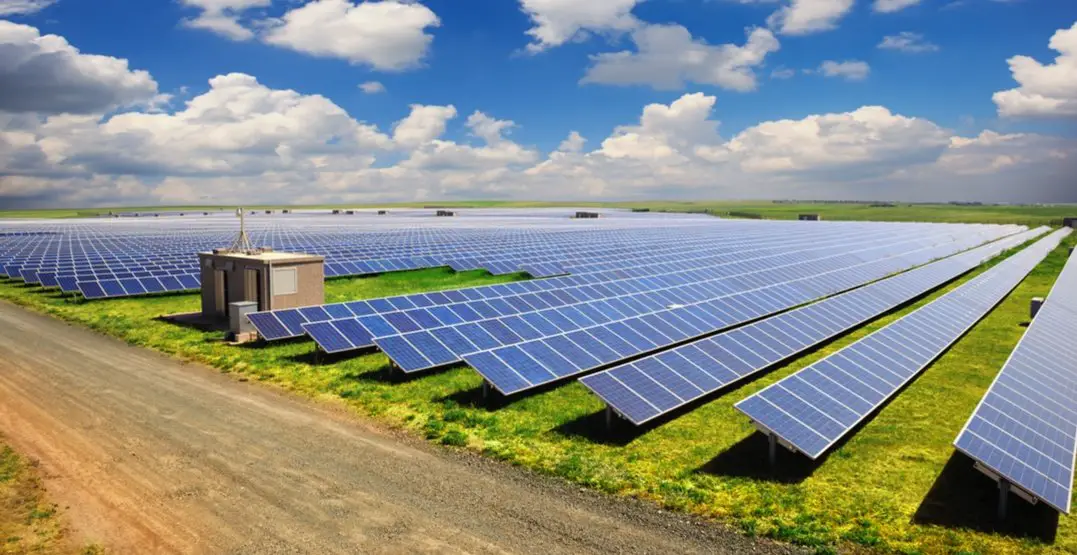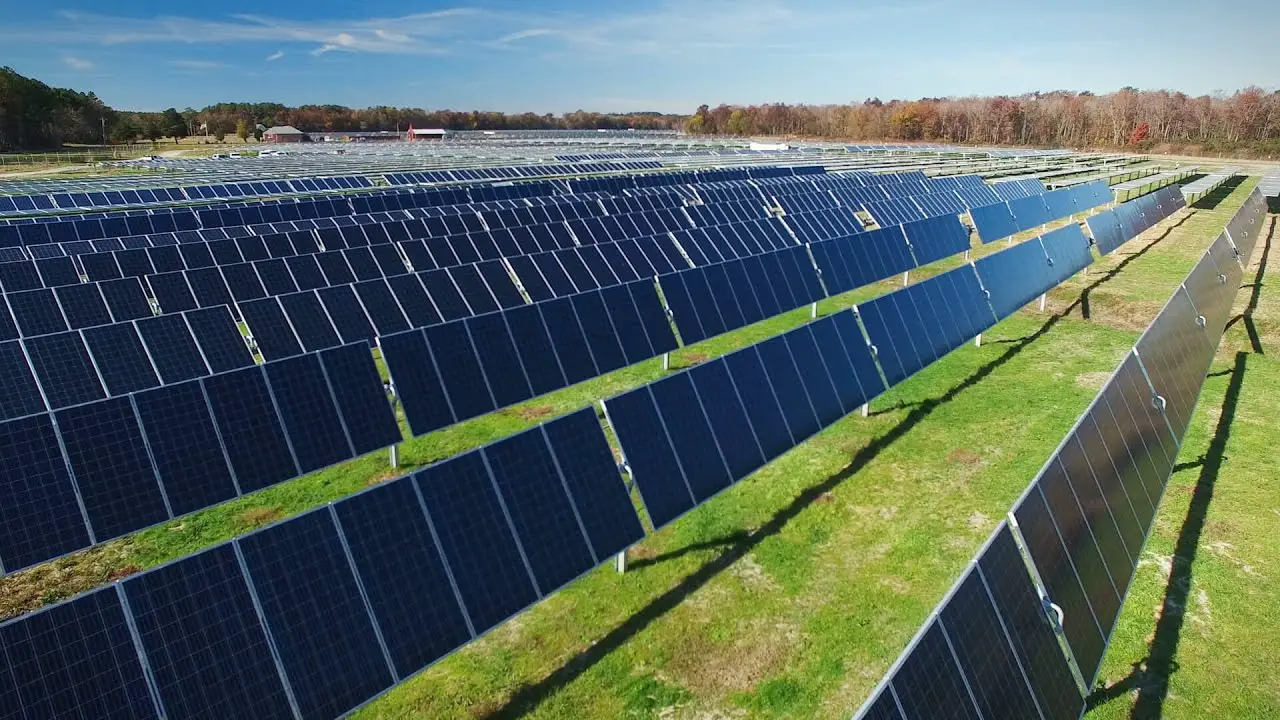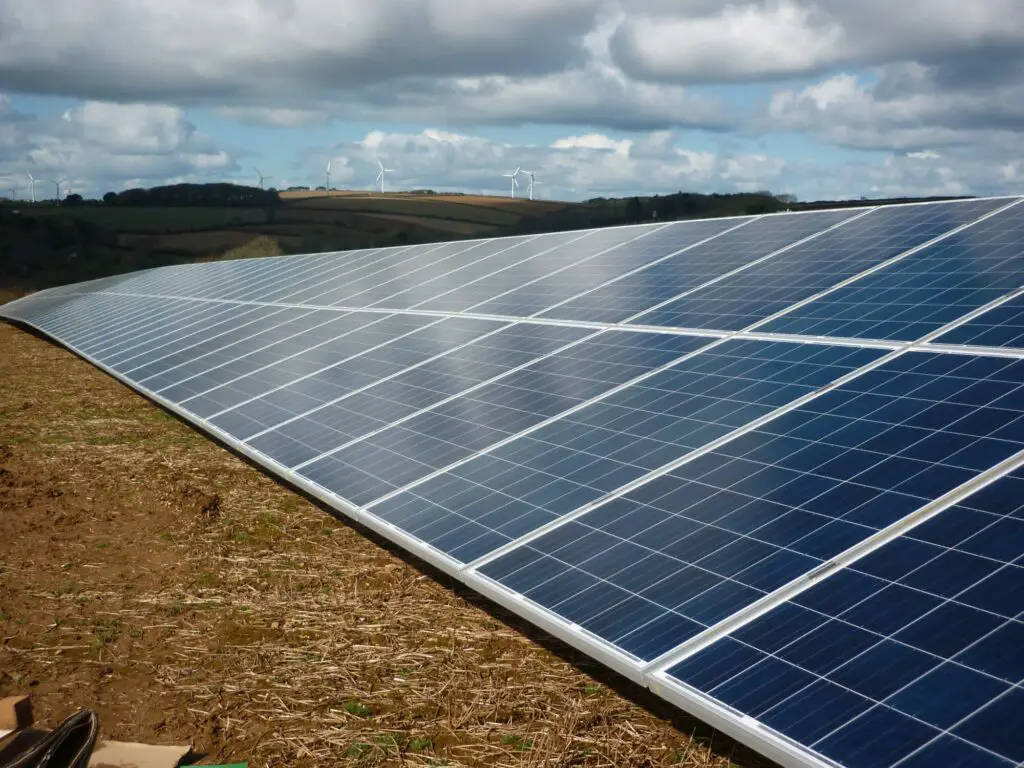Solar Farm Revenue Per Acre
Referring to the revenue generated by the entire solar farm, divided by the number of acres on the farm. As discussed, revenue depends largely on the initial investment costs, the electricity prices at which the energy generated it sold to consumers, and available incentives, credits, and tax breaks.
The Disadvantages Of Solar Farms
Despite their benefits, solar farms and solar power generally are not the miraculous solution to climate change. Here is why.
Solar power is intermittent
A major issue with solar is that its intermittent, which is not the case with oil and gas-derived energy. The sun doesnt shine at night. However, this problem is being solved as solar is increasingly paired with energy storage, both in homes and at utility-scale installations. The SEIA expects that by 2025 one-third of new solar systems will be paired with storage.
Solar farms require an abundance of sunshine
There is no point in putting PV panels in places where the sun doesnt shine very often. In the U.S., sunny states like California, Florida, and Texas are leading new solar capacity additions, which makes sense. But solar panels arent as great in less sunny locations.
Solar farms need open land
Although solar farms are supposed to be good for the environment, the amount of open land they need is drawing opposition from environmentalists and locals. Opponents are concerned about spoiled views and damage to local species, even when they claim to be pro-renewables. Local residents want clean energy, but not if it spoils their view. Floating solar farms have been proposed as a solution in places like Singapore, but not everywhere lives next to open water, either.
The industry is facing rising costs
Are Solar Farms Profitable
Solar power is the future. And, as more and more people look to solar power to meet their energy needs, the demand for solar farms will only continue to grow. This makes solar farms a very profitable business opportunity.
The initial investment required to start a solar farm can be significant, but the returns are high. Solar farms typically have a payback period of 3-5 years. This means that you will make your money back, and then some, within a few short years.
You May Like: How Much Is A 3kw Solar Panel System
Hiring An Installer & Installing The System
Once you have chosen your solar panels, you will need to install them. This can be a complex and time-consuming process, so it is important to hire a qualified contractor to do the work.
You should also make sure that the installer is familiar with the permitting process and can obtain all of the necessary permits and permissions.
How Much Do Solar Farm Leases Pay

As a landowner, you may choose to rent out your solar farm and earn money.
This option is best for those who dont want to build their own farm but would rather lend out their property to an external solar farm developer.
If this is something you choose to do, you can earn between $250 and $3,000 per acre a year.
The exact amount will depend on what you negotiate and codify in the leasing agreement.
Read Also: Where To Buy Solar Paint
How Much Does It Cost To Start A Solar Farm
On average, costs to build ground mounted solar arrays ranges from .82 to 1.36 per watt. That means that to build the infrastructure for solar facilities of 1 MW costs from $820,000 to $1.36 million.
That estimate includes the construction costs of solar installations, as well as other costs:
Negotiating permission to interconnect to a larger electricity grid using high voltage power lines $30,000.
Solar company insurance $23,000.
What about small scale solar facilities, such as rooftop solar gardens? Rooftop installations cost more to install, about $2.84 per watt. The energy generated will typically be less than 20 kW. Although the power produced is less, rooftop installations are popular for solar developers who dont have the land needed for large scale solar development.
Cons Of Starting A Solar Farm
1. Solar Farms Take up a Lot of Space
Since they are ground mounted, solar panels require a lot of space.
2. Solar Farms Are Expensive.
The investment costs are quite high as discussed in earlier sections, so you will need to be adequately capitalized to start this type of business.
3. Set Up is Complex
As we discussed, there are significant permitting and other licenses that may be required and the entire process can take years. This is not something that you will be able to start in a month.
4. Power Storage Can Be Expensive
People need electricity 24/7 but the solar panels work only in daytime. So for the surplus electricity generated , storage is required. Lithium-ion battery packs are commonly used to store solar energy and they cost around $1,000 per kilowatt-hour.
Recommended Reading: What Does The Average Solar System Cost
More About This Project
Column: Legislation halting solar projects misguided
The International Brotherhood of Electrical Workers represents nearly 20,000 workers in Ohio and is the largest energy union in the world. Our local labor halls represent members responsible for keeping all generation sources running fossil fuels and carbon neutral sources alike. IBEW locals in Ohio have been diligently training our workforce for the growing solar energy economy and stand ready to actively participate in the industrys growth.
Proposed solar farm scales back footprint
I think most people do want us there, and its our responsibility to tweak the layout to accommodate the concerns of the community, Montana said. In the last couple of weeks, weve done extensive environmental studies and melded that together with feedback weve gotten from the community to make a much more consolidated project.
Letter: Shawnee can grow stronger
I am a member of the Shawnee community and have been hearing a lot of concerns about the Birch Solar Project. It is my obligation to my community to speak out about the truth of utility-scale solar so that we can squelch the false allegations being posed by the anti-solar groups in our region.
Are There Ongoing Costs For A Solar Farm Business
Yes. Some of the ongoing costs for your solar farm business include insurance, financial advisor and lawyer fees, mortgage, licensing, and property taxes. Investors providing extra services aside from land leasing will also need to consider travel expenses, payroll costs, as well as higher insurance expenditures.
You May Like: Does Residential Solar Make Sense
Get The Required Business Licenses And Permits
In order to start your own solar farm business, you will need to obtain a number of licenses and permits. These include a license to operate the solar farm, a site development permit, and possibly other permits depending on the specifics of your project. You should reach out to your local government officials to learn more about the specific requirements in your area.
Why Is Solar Energy Being Pursued As A Source Of Grid Power
The most important driver behind the growth of solar is the declining cost of solar power technology and installation. The cost to install solar has declined 75% or more in the last decade. The cost of new large-scale solar generation has dropped to the point where it is cost-competitive today with traditional coal and natural gas power plants.
Don’t Miss: How To Start A Solar Panel Installation Company
Know The Nature Of Your Land
It is absolutely imperative to know about the nature of the land wherein you plan your future solar farm to be. If you have not decided on fixed pieces of land yet, then you should do so in order to take the next steps.
While picking the land to start a solar farm, remember to check out all the other components of the land while youre at it. This means everything what temperature the land usually gets at various times of the day, pipelines and drainage systems that can potentially damage the farming potential of the land.
Make sure that having solar farms on that piece of land will not hamper its other qualities. Additionally, pay special attention to the buildings around and what kind of shade they provide to your land, if any. It is recommended to have minimal shade at all times. Keep in mind whether the advent of access roads can be an issue as well since it is quite possible that the farming potential may be degraded because of the installation of solar panels.
Also Read:
Types Of Solar Farms: Utility

There are two main types of solar farms around the country: utility-scale solar farms and community solar farms. The main difference between the two is their customers, as utility-scale solar farms sell directly to utilities, while community solar farms sell directly to end-consumers of electricity, such as homeowners and renters.
Recommended Reading: Are Free Solar Panels Worth It
Solar Farms: Photovoltaic Pv Vs Solar Thermal
Solar Thermal
Most early solar farms were built using solar thermal technology. Thermal solar farms use a series of mirrors to concentrate the suns heat onto a central column that uses the high temperature to create steam, which then spins a turbine to make electricity
Stationary vs Tracking
Solar farms that use PV technology may install stationary or rotating panels in rows. The more panels, the more space is needed and the more electricity is generated.
Thermal solar farms install collectors mirrors , dishes, reflectors and troughs that move to track the suns path across the sky.
Solar Farm Site Assessment
A PV solar farm can range from a few acres to hundreds of acres in size. They can be found across the country.
A thermal solar farm can be small but most are large in the thousands of acres. Most are found in desert areas.
Soil composition, water access, and proximity to power lines and substations all play a part in the selection of a site. Zoning issues affect the location of solar farms. Landowners legal rights to contract for long terms can influence site selection between private and federally owned land.
Solar Farm Financing options
Solar Farm Incentives
Rebates and tax credits can help defray the costs of solar farm installation. Feed-in tariffs and solar renewable energy certificates can help make the operation of a solar farm profitable.
Dont Miss: Can An Air Conditioner Run Off Solar Power
Develop Your Solar Farm Business Plan
One of the most important steps in starting a solar energy farm business is to develop your business plan. The process of creating your plan ensures that you fully understand your market and your business strategy. The plan also provides you with a roadmap to follow and if needed, to present to funding sources to raise capital for your business.
Your business plan should include the following sections:
Also Check: How Often Do Solar Panels Need Cleaning
Step : Register For Taxes
You will need to register for a variety of state and federal taxes before you can open for business.
In order to register for taxes you will need to apply for an EIN. It’s really easy and free!
You can acquire your EIN for free through the IRS website, via fax, or by mail. If you would like to learn more about EINs and how they can benefit your LLC, read our article, What is an EIN?.
Learn how to get an EIN in our What is an EIN guide or find your existing EIN using our EIN lookup guide.
Small Business Taxes
Depending on which business structure you choose, you might have different options for how your business will be taxed. For example, some LLCs could benefit from being taxed as an S corporation .
You can learn more about small business taxes in these guides:
There are specific state taxes that might apply to your business. Learn more about state sales tax and franchise taxes in our state sales tax guides.
What Makes Solar Farms Well
Solar farms are renowned globally because they provide plenty of benefits. You can utilize the land of a solar farm for pasturing small livestock continuously. Moreover, you can quickly transform the land back to its original state in the future.
Solar farms employ and promote green technology hence, they help form healthier communities with quick access to affordable, safe, and clean energy.
Not to mention, solar farms are worthwhile investments because they allow landowners to earn more using their unoccupied lands.
Best of all, they can ensure a high ROI because you can set aside some bucks on your energy bills, and the costs for maintenance are not as high as you imagine. In addition, solar panels do not come with moving components, and their components are set up within soundproof boxes. As a result, they dont generate disturbing noise.
Essentially, they can serve as a consistent power source. Nowadays, many universities and research institutions are organizing solar farms to sufficiently and efficiently power their grounds.
More importantly, since solar farms are low maintenance, you wont have to deal with high maintenance and support once set up. They can work for over 20 years and wont call for frequent checkups but semi-annual cleaning.
Don’t Miss: How Much Is A Solar Attic Fan
How Much Can You Earn From A Solar Farm Business
The per-acre profit of a solar farm runs between $20,000 and $40,000, with an average of $30,000. After costs your profit margin should be about 90%.
If you have eight acres and make $30,000 per acre, your annual revenue will be $240,000, and your profit will be $216,000. You could expand your farm over time by using your profits to purchase more land and add to your grid, thus increasing your income substantially.
If you lease your land, you can probably earn $2,000 per acre per year. With 8 acres at $2,000 per acre, youll make $16,000 in annual revenue.
You can use Step By Steps profit margin calculator to analyze your numbers.
What Are The Different Types Of Solar Farms
There are two main types of solar farms: utility-scale and community solar.
Heres what you should know about each of them and how they differ.
Utility-scale solar farm
Utility-scale solar farms refer to massive areas of land where solar panels stretch beyond the horizon.
These installations consist of hundreds of thousands of solar panels that absorb energy from the sun, generate an electric current, and distribute that power on high-voltage power lines.
The electricity then travels along those power lines to the electricity grid and eventually finds its way to your home.
Community-scale solar farm
These solar farms are small-scale solar facilities that generate around 5 MW of electricity for a local community of homes and businesses.
Whoever participates in the program shares the power.
Residents may see a reduction in the electricity bill depending on the number of residents and the amount of power produced.
Heres how a community-scale farm works.
First, solar panels are installed in a large, open area of the neighborhood that receives maximum exposure to sunlight.
Next, solar energy is fed into the larger electricity grid for the region.
Finally, individuals who joined the solar program see their energy bill adjusted for the amount of energy generated in relation to the size of their home.
Also Check: Can You Sell Solar Energy Back To The Power Company
How Does A Solar Farm Business Work
Utilizing unused land, usually perceived as farmland, and plenty of solar panels, a solar farm transforms solar power into electricity. The produced energy is transmitted again into the electric grid. The local electricity firm pays the owner for the produced energy.
The underlying standards are identical to a solar panel operation set up on the homeowners rooftop the only difference is that this one is for a broader scope. To generate and sell power to the local utility and earn money, a solar farm employs a vast piece of land.
Generate Passive Income By Leasing Your Land To Solar Farm Developers

If you own land that meets the various requirements we just discussed, but don’t want to actually deal with the cost and hassle of starting a solar farm, you may want to look into leasing out your land to solar farm developers.
This type of lease can provide a pretty nice source of passive income. According to solarlandlease.com, you can earn between $250 to $2,000 per acre, per year. Not a bad recurring payday for otherwise idle land.
Also Check: How Much Do Commercial Solar Panels Cost
Solar Farm Legal Documents
In addition to the necessary permitting, youll also need to apply for a business license, certificate of incorporation, and other business-related documents. If you intend to lease land for your solar farm, youll also need a lease agreement. Finally, if you intend to apply for loans or other financial assistance, youll need to create an involved business plan and provide other documentation to achieve funding.
